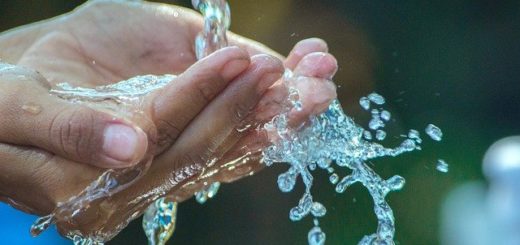Consultancy to conduct Safety Audits in Turkana, Isiolo, Kajiado, Garissa and Samburu – IRC
1.0 Background
Despite the reported rains in most parts of the country in the last Days of March, and through April, the rains are yet to impact on production systems. The drought situation thus remains critical in twenty-two (22) of the 23 ASAL counties during the month of March 2023. Two (2) counties namely Marsabit and Turkana remain in Emergency drought phase. Eight (8) counties namely Isiolo, Mandera, Kajiado, Samburu, Tana River, Wajir, Kilifi and Kitui are in Alarm drought phase. Eleven (11) counties including Baringo, Embu, Garissa, Lamu, Makueni, Laikipia, Narok, Nyeri, Meru, Kwale and Taita Taveta are in the Alert drought phase[1].
Kenya finally received rainfall in March after four missing rainy seasons. The reported rains in most of the Arid counties are associated with flash floods which had negative impacts on the local livelihoods and critical facilities like roads. As a result, this has led to loss of lives, livestock, and property; damage to school infrastructure and closure of some schools and displacement of persons including women & girls heightening their risk to gender-based violence.
2.0 IRC Presence and Programmes
The International Rescue Committee (IRC) is a non-governmental organization that provides emergency aid and ongoing support to refugees and people who have been displaced due to conflict, persecution, or natural disasters. The IRC supports the local host communities and refugees in becoming self-sufficient and recover from crises. It focuses mainly on protection, health, education, economic wellbeing, power, and safety.
The IRC implements Health, Nutrition, Protection, GBV and Livelihood programmes in Garissa and Turkana Counties. SRH services are integrated into the wider health services. These services have also been extended to the host community. The organization also has presence in other parts of the country implementing directly or through implementing partners, e.g. Nairobi, West Pokot, Tana River and Kajiado. The IRC has an established tradition of evidence-based programming through a robust monitoring, evaluation, accountability, and learning (MEAL) system. The IRC receives funding and technical support from UNFPA to implement SRHR and GBV interventions in its field sites.
3.0 Safety Audit Assessment
3.1 Overview
For the past year, IRC has worked with implementing partners to carry out integrated emergency drought response activities. Given the climate change, the IRC intends to assess safety and security concerns, with a focus on women and girls and conduct a further analysis on basic facts about clients and situation and gendered impacts of the transition from severe drought to rainy seasons, so that it can plan to improve its protection response in Turkana, Garissa, Isiolo, Kajiado, and Samburu Counties, and subsequently meet the needs of survivors and diverse clients, and reduce the vulnerability of women and girls to GBV.
3.3 Project Objectives
The overall objective of this assignment is to conduct safety audits in Isiolo, Turkana, Kajiado, Garissa and Samburu counties. The specific objectives of the consultancy are:
Objective 1: To gather information from various groups of girls and women about their main safety concerns in the community, the places where they feel safe and unsafe, the threats that contribute to these feelings, and the best ways to increase their protection and safety.
Objective 2: Assess the specific needs of women and girls in relation to their exposure to GBV risks. Determine the types of gender-based violence (GBV) that are occurring, the needs of the community in relation to GBV, any gaps in meeting these needs, and factors affecting girls’ and women’s risks of and resilience to GBV.
Objective 3: Ascertain the presence of GBV prevention and response measures at the county level, as well as the views and awareness of GBV among healthcare workers and the community.
Objective 4: To recommend an action plan with short-, medium- and long-term changes and recommendations to improve women’s safety in public spaces.
4.0 Rationale
GBV Safety Audits serve to examine the hazards of GBV, suggest appropriate steps to lower these risks, and increase survivors’ access to a comprehensive response. Safety audits facilitate the identification of visible risks and the assessment of vulnerabilities to persons of all genders. The findings and analysis of safety audits then inform the design of interventions that include risk mitigation strategies and/or advocacy goals. They also aim to better comprehend the support-seeking preferences of GBV survivors, the obstacles to obtaining GBV services, and the most effective methods of communicating the services that are accessible. IRC and its partners need current, pertinent information about the gendered impact of climate change, drought and oncoming rains, protection needs, prevalent types of GBV, the needs of survivors, the gaps in responding to these needs, and the factors influencing girls’ and women’s vulnerability and resilience against GBV to prevent and respond to gender-based violence in emergencies (GBViE). Programs that have been designed with a contextual understanding of GBV risks and proactively work to mitigate them have a greater rate of success. Community members can access services safely, which will likely increase uptake of services and subsequent satisfaction.
4.1 Scope of Work
In liaison with the Women Protection and Empowerment (WPE) Program Team, Monitoring, Evaluation, Accountability and Learning (MEAL) team, guidance from UNFPA and input from partners, the consultant will be required to:
i) Undertake a desk review related to County safety audits and gender-based violence situation in Turkana, Isiolo, Garissa, Kajiado and Samburu.
ii) Conduct consultations with relevant stakeholders and use the recommendations to enrich the safety audits.
iii) Collect qualitative and quantitative data from women and girls to assess their safety and security concerns, safe access to services and other concerns that put them at risk of GBV in the four counties.
iv) Develop, in consultation with IRC, a detailed data management plan, including Developing /adoption of tools; recruitment and training of research assistants; pre-testing and review of tools; sampling methodology; implementation of data collection in the field; quality assurance; ethical considerations; qualitative and quantitative data analysis, and reporting
v) Lead data collection in the counties including designing and leading key informant interviews and focus group discussions.
vi) Analyze data in a rigorous, robust manner using appropriate statistical and qualitative analysis techniques.
vii) Conduct a validation exercise with stakeholders, including IRC.
viii) Submit the approved safety audits reports per County to IRC.
Using a feminist approach, the safety audit assessment will gather information on the various needs, abilities, and coping mechanisms of men, women, boys, and girls. The following primary areas of inquiry will be the focus of data collection, with the consultant expected to develop data collection tools that capture sufficient information.
4.2 Deliverables / Outputs
i) An inception report defining the audit study approach, methodology including the sampling criteria, and tools used for both qualitative and quantitative data collection. The sampling plan should be inclusive of all demographic groups and take gender equality into account.
ii) A thorough and well-structured safety audit report not longer than 25 pages per County.
iii) Supplementary files, including photographs, original and cleaned datasets, and statistical output files.
iv) Presentations using PowerPoint and a fact sheet, abstract, or both will be utilized to share results with stakeholders.
v) Present the report to relevant parties, such as the protection, GBV and SRH working groups, who will be asked to validate the findings and contribute.
vi) An executive copy with a summarized summary of findings in words of no longer than 15 pages, and in power point presentation.
5.0 Date and Duration of Consultancy
The consultancy period shall be for 15 days per County. The Executive reports and county specific audit reports must be submitted to IRC within 10 days after validation exercise.
[1] https://www.ndma.go.ke/index.php/resource-center/national-drought-bulletin/send/39-drought-updates/6901-national-monthly-drought-updates-april-2023
Qualifications
The ideal consultant should have: –
i) A post-graduate degree in Gender and Development, social sciences or another relevant field.
ii) Over 5 years of experience conducting gender studies with evidence of publications or field reports on gender and gender– based violence issues with experience in women and adolescents programming.
iii)The consultant must be able to demonstrate experience in conducting safety audits of a similar or related assignment.
iv) Experience in working collaboratively with government and other development partners.
v) Experience working with marginalized and special groups.
vi) Ability to communicate in English and Kiswahili and in local languages in Turkana, Isiolo, Samburu, Kajiado or Garissa is an added advantage.
The successful candidate will be required to:
i)Follow protection guidelines when engaging with all participants in the safety audit process.
ii)Adhere to organization policy of different partners that will be involved in the safety audit assessment.
iii) Adhere to human rights, Protection Principles, socio-ecological, systems strengthening and MHPSS approaches.
iv) Be guided by the spirit of collaboration, cooperation, partnerships, balance of power, meaningful engagement of marginalized voices and women, girls, young people, vulnerable, persons living with disability among others.
6.0 The IRC and UNFPA Role:
i)The IRC AND UNFPA will fully engage the project lead consultant.
ii)The IRC AND UNFPA will review the tools/reports in a timely fashion.
iii)The IRC will reimburse transport logistics within the target Counties as per IRC set guidelines.
7.0 Application
Interested applicants should submit their CVs and technical and financial proposal to the IRC careers cornerstone portal not later than 7 DAYS starting from the announcement date.
Consultants who meet the qualification above must submit the following documents:
– Statement including a CV with experience details.
-Technical proposal summarizing understanding of ToR, methodology and tools to be used.
– Workplan
– Financial proposal providing cost estimates.
– Contact details of three organizations/ previous clients.
– All the required legal documents including VAT registration certificate.
For application: https://rescue.csod.com/ux/ats/careersite/1/home/requisition/41659?c=rescue








